Vanity Fear Vlog Review - "Duh-geons & Dragons"
 Wednesday, August 15, 2012 at 6:00AM
Wednesday, August 15, 2012 at 6:00AM Because I don't care if you hate my video reviews.
 B-TV,
B-TV,  Mazes & Monsters,
Mazes & Monsters,  Tom Hanks,
Tom Hanks,  Wendy Crewson in
Wendy Crewson in  B-TV,
B-TV,  Vlogs
Vlogs
 Wednesday, August 15, 2012 at 6:00AM
Wednesday, August 15, 2012 at 6:00AM Because I don't care if you hate my video reviews.
 B-TV,
B-TV,  Mazes & Monsters,
Mazes & Monsters,  Tom Hanks,
Tom Hanks,  Wendy Crewson in
Wendy Crewson in  B-TV,
B-TV,  Vlogs
Vlogs  Monday, August 13, 2012 at 6:00AM
Monday, August 13, 2012 at 6:00AM Buck Rogers in the 25th Century
(1979)
Synopsis
Nasa astronaut Buck Rogers’ (Gil Gerard) 1987 solo mission in space does not go as planned and through a fluke of the universe he is frozen and left to float alone in the cosmos for 500 years. Found by an alien space station on its way to a mission to Earth, Rogers is defrosted and meets Princess Ardala (Pamela Hensley) and her second in command, Kane (Henry Silva). Before Rogers even has time to comprehend what has happened to him, they put him back on his ship and send him back to Earth, hoping the bug they implanted will informed them how to break through the planet’s defenses. Back at Earth, Rogers is examined and is determined to be honest and reliable by Dr. Theopolis (Howard F. Flynn), a sentient computer carried around by a tiny humanoid robot named Twiki (Felix Silva & Mel Blanc), but that doesn’t stop military commander Colonel Wilma Deering (Erin Gray) from being suspicious of him. Declared a spy by the Earthlings once the bug on his ship is discovered, Rogers is sentenced to death but is spared after an act of heroism during a space pirate raid. Suspecting that Kane and the Princess are secretly behind the pirates, Rogers seduces and drugs Ardala and manages to sabotage their attack force, ensuring their planned invasion of Earth fails before it even has a chance to start. At last, he earns Deering’s respect, as well as a new home in a strange future.
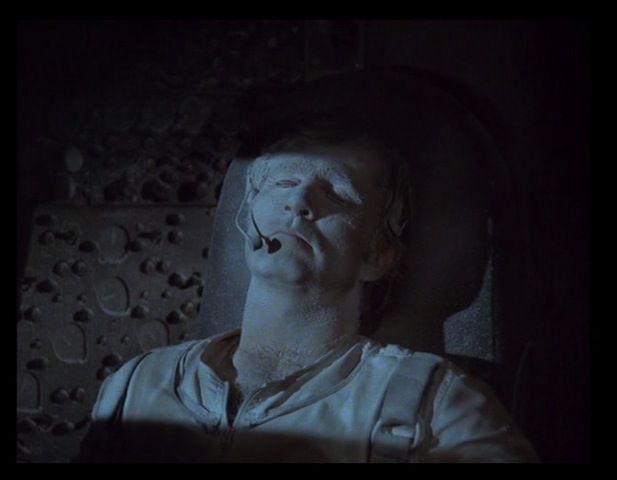
Pertinent Details
B-TV or Not B-TV: Originally conceived as the first of a series of TV movies made to capitalize on the success of Star Wars, this eventually became the pilot for a regular series instead. When the pilot of producer/co-writer Glen A. Larson’s similar sci-fi series Battlestar Galactica found success as a theatrical movie in Europe and some parts of North America, the decision was made to release Buck Rogers to theatres instead of debuting it on television as had originally been planned. There it grossed a very respectable $21 million and was later split into the first two episodes of the series that followed and would go to last for a season and a half.
Too Ballsy For Primetime: Some changes were made between the theatrical and TV versions. The theatrical version featured a memorable (see more below) opening credit sequence set to the song “Suspension” (performed by Kipp Lennon and co-written by Larson) in which Rogers lays around unconscious while Gray, Hensley and several anonymous models pose seductively, while the split TV eps used the show’s standard credits, set to an instrumental version of the song. Beyond this, scenes where Rogers calls Deering “ballsy” and Twiki refers to freezing his “ball bearings” were cut from the TV version. Several new scenes were also added to the TV version, so the resulting two episodes both came in at then-standard broadcast length. These new scenes haven’t been seen in awhile, since the released DVD set only includes the theatrical version.
An Old Established Character: Proving that 21st century executives didn’t invent the habit of going back to the past to follow and capitalize on new trends and viewer nostalgia, Buck Rogers was based on a property that was over 50 years old by the time the movie hit theatre screens. The character first appeared in a pulp fiction magazine in a story written by Phillip Francis Nowlan and subsequently became famous in other stories, a comic strip, a 1939 movie serial starring Buster Crabbe (who would go on to play a role in the first official episode of the 1979 series), and an earlier short-lived TV series that ran from 1950 to 1951.
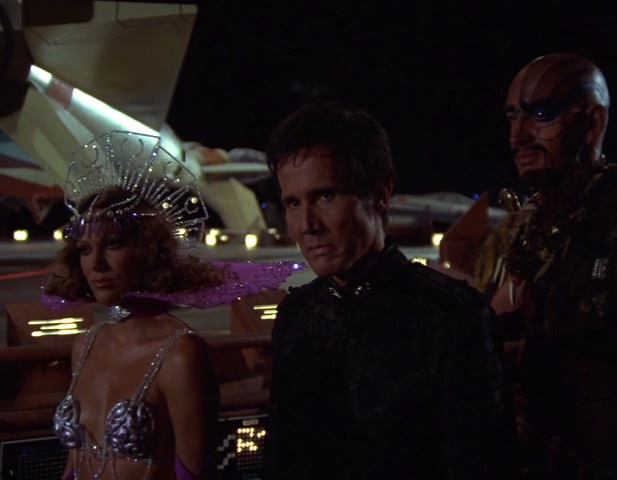
My parents are often bewildered by my ability to recall certain details of the past that they had long ago obliterated from their memories. I don’t think I necessarily possess a better grasp of my childhood than any other average person, but it probably isn’t a coincidence that many of the most powerful remembrances of my youth are tied directly to film and television. Even at the earliest possible age I found that such entertainments mattered to me more than most.
It’s because of this that the earliest memory I have that I can specifically date (as opposed to those that might have come before but are impossible for me to determine when they actually happened) occurred in the summer of 1978, when I was two years old. In it, I’m sitting/standing (I was small enough that I could comfortable do both) in the back of the Dombroski’s station wagon. It’s parked at the Twin Drive-in and I am watching a movie I would later realize was called Star Wars, which had been re-released to theatres a year after it’s original run because home video hadn’t been properly invented yet. As much as the movie impacted me later on, the film itself is secondary to my memory of the interior of that car and the salty-buttery taste of the popcorn.
That’s the earliest memory I can put a general date on. The second comes several months later, in March of 1979 to be exact. This time I’m not in a car, but a regular old-fashioned movie theatre, where I’m sitting with my parents (who may or may not have been there with the Dombroskis—who I definitely know were around in May of 1980, when I saw The Empire Strikes Back at the age of 4). Predictably, I have very little recall of the film itself. Even though I’ve always known that I saw Buck Rogers in the 25th Century in a theatre, it wasn’t until I just watched it again 33 years later that I realized the only thing I actually remembered about it was this (embedding has been disabled by the copyright owner, so click on Erin to see the whole glorious video):
So, yes, this proves without a doubt that even at three years old, all I really cared about in movies was the pretty girls, which obviously still stands today, because were it not for the presence of Pamela Hensley and Erin Gray, I would now consider the film to be a total snooze. I actually feel compelled to thank my parents (and possibly the Dombroskis) for sitting through it all those years ago, as this obviously proves that they loved me and would endure all sorts of terrible entertainment for my benefit.
Viewed with the eyes of an old, old man, the film exists in an unhappy limbo where it’s too self-conscious to descend to the cheesy heights of absurdity that transform a film like Luigi Cozzi’s Starcrash from a bold-faced rip-off to an original classic of its own, while also being too inelegantly formulaic and commercial to disguise the disinterested rote-ness of its clinical professionalism.
In other words, it’s too well made to be “so-bad-it’s-good”, which is unfortunate because it also doesn’t have the budget or imagination to transcend the innate absurdity of its concept. This isn’t a problem for television, but for a theatrical movie it’s the touch of death. (Having gotten into the series itself, I can happily report that it itself manages to satisfyingly reach the “so-bad-it’s-good” status required to redeem its existence.)
The only way most sci-fi TV shows can afford to stay on the air is to use costly action and special effects as sparingly as possible—to the point that many such shows fall under the trap Joss Whedon refers to as “radio with pictures”. It’s a trap Buck Rogers cannot avoid, partially because of a lack of resources, but also because its chief creative mind, Glen A. Larson, was a television man through and through (his other more successful efforts included Simon & Simon, Quincy, Magnum P.I., Knight Rider and—my personal favourite—The Fall Guy) and the project’s small screen origins are so inherently a part of its DNA there’s no disguising them.
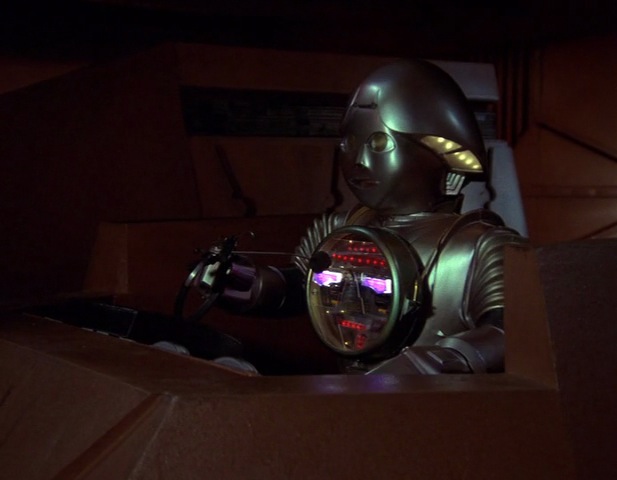
There’s no question that the movie or series would not exist were it not for the success of Star Wars, but as is typically the case, everyone involved failed to properly analyze the reasons for its success. Instead of determining that kids adored C-3PO and R2-D2 because they were a compelling comic duo who served as our gatekeepers to this strange and special universe (everything that had to be explained to them was actually being explained to us!), Larson and associates figured that kids just liked cute funny robot teams and thus gave us Twiki and Dr. Theopolis.
It’s a crucial miscalculation. Though kids were actually delighted by the comic antics of Twiki (because kids are stupid, see also Ewoks), he feels completely out of place in the context of the other characters. R2-D2 was adorable to be sure, but he not only fit in with all of the other characters, he actually managed to be as fully developed as they were—proving capable of genuine acts of heroism and generating affecting emotion. Twiki, on the other hand, is clearly just there to sell toys and make theoretically comedic comments in a voice straight out of a Loony Tunes cartoon. And Dr. Theopolis, rather than being the neurotic, tight-assed C-3PO, is just a boring clock with a face who spends all of his time telling Buck (and us) what’s going on. He’s so forgettable it wasn’t until I re-watched the movie that I remembered he existed and realized Twiki’s main purpose was to carry him around.
As Rogers Gil Gerard manages to have a few fun moments, especially those that compel him to channel his inner Han Solo, but the script both requires him to accept and deny his situation in frustratingly implausible ways, having him act more often to propel the plot than as a fully developed character.
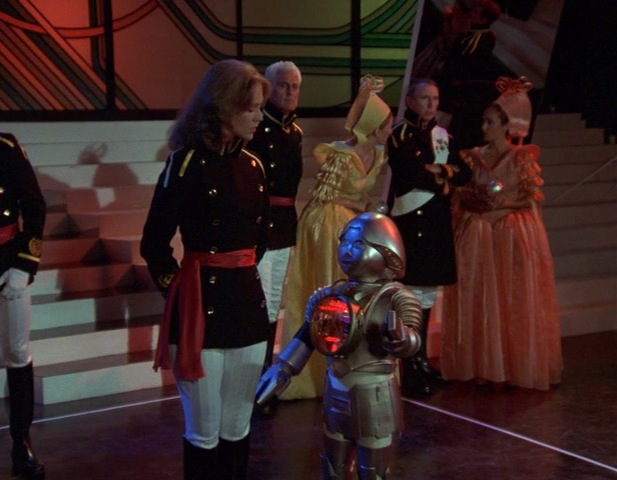
This is also true for Erin Gray, who your eyes will note was about as gorgeous as any human being was capable of being in the late 70s, but who is poorly served by a script that has her acting like an unreasonable military tight-ass in one scene and a moony-eyed dish-mop the next. The scene were she gets upset watching Buck dance with the equally-gorgeous horndog Princess Ardala is supposed to be funny, but it actually makes no sense in the context of what we’ve seen before. She’s acting that way because in television that’s how the female co-star is supposed to act when the leading man dances with the other pretty lady, not because a human being would actually act that way.
But the biggest problem is the film’s lack of urgency, which is most tellingly illustrated in the scene where Rogers, Deering and crew engage in a dogfight with what they then believe are space pirates, but are actually Princess Ardala’s men in disguise. The pirates pick off the other crewmembers with ease, leaving just our two main characters alive. No sense of weight is given to any of these deaths, and Buck even makes a joke as they turn around and fly back to Earth, apparently indifferent to the human loss. If we can’t be expected to feel anything in a moment like this, then everything else is destined to feel similarly lifeless and flat.
That said, I do love that opening credit sequence I wish I could have embedded above. It’s the closest the film ever comes to feeling at all cinematic. Had the rest of the movie shown that kind of gaudy flair I suspect I would have one more treasured childhood memory, instead of one I can just attach a specific month and a year to.
Que sera sera.
 B-TV,
B-TV,  Buck Rogers,
Buck Rogers,  Erin Gray,
Erin Gray,  Gil Gerard,
Gil Gerard,  Glen A. Larson in
Glen A. Larson in  70s action,
70s action,  B-Movies,
B-Movies,  B-TV,
B-TV,  I Saw This In The Theater,
I Saw This In The Theater,  Toys
Toys  Sunday, June 17, 2012 at 4:27PM
Sunday, June 17, 2012 at 4:27PM 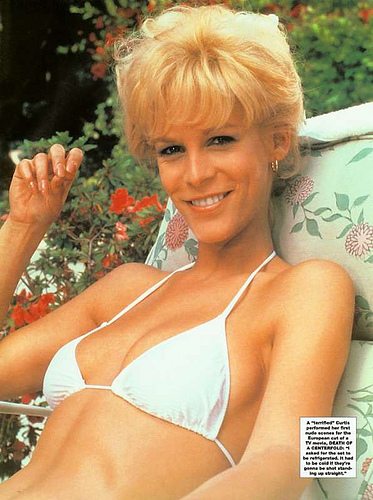 Remember back when porn required effort? If you grew up during the Internet age, chances are you don’t, but for those of us old enough to remember when e-mail was a term entirely devoid of meaning, it’s easy to recall those strange days where being too young to legally watch porn actually meant it was difficult to get your hands on it.
Remember back when porn required effort? If you grew up during the Internet age, chances are you don’t, but for those of us old enough to remember when e-mail was a term entirely devoid of meaning, it’s easy to recall those strange days where being too young to legally watch porn actually meant it was difficult to get your hands on it.
Maybe you had a friend with a drunk dad who wouldn’t notice a missing video from his stash or you found a torn up magazine some mentally ill stranger decided to throw away in the nearby neighbourhood park.
But mostly though it just existed as this thing you knew was out there, but no one talked about—kept hidden away in curtained sections of video stores and the top shelves of drug store magazine racks.
Like all things kept out of reach, this only inflamed our curiosity—a fact many TV news shows appreciated, knowing a “serious” report about the adult film industry was a guaranteed way to increase ratings, especially since it allowed them to show images of pretty young women in very little clothing all in the name of “real” journalism.
Given the kind of programing made during that time, it was rarer for fictional shows to explore this same territory—somehow porn just didn’t fit in well with The A-Team or Mr. Belvedere—but that’s why they invented the TV movie, which at the time had already become notorious for exploiting anything at all salacious for the sake of ratings.
That’s why Death of a Centerfold: The Dorothy Stratten Story, starring Jamie Lee Curtis, risked dancing on its subject’s grave in order to be seen on TV screens less than a year after she was murdered by her ex-boyfriend, Paul Snider (beating Bob Fosse’s much better treatment of the same story, Star 80, by two years). The ratings proved worth the effort and the networks regularly sought out material that involved tons of tastefully implied nudity with a touch of realistic drama (see also 1984’s I Married a Centerfold and 1991’s Posing: Inspired By Three Real Stories).
So in 1987, they took notice when the PBS documentary series Frontline aired Death of a Porn Queen, which told the story of the 1984 suicide of an adult film starlet named Shauna Grant (Colleen Applegate).
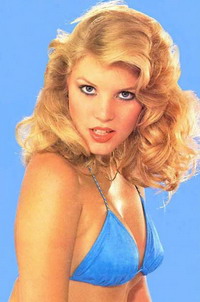 Applegate’s story was a sad one, but hardly unique. She had left the small town of Farmington, Minnesota, to seek her fortune in California, where she and her boyfriend quickly spent all of their money searching for jobs that didn’t exist.
Applegate’s story was a sad one, but hardly unique. She had left the small town of Farmington, Minnesota, to seek her fortune in California, where she and her boyfriend quickly spent all of their money searching for jobs that didn’t exist.
Desperate for cash, they found an ad for the World Modeling Agency, which was owned and operated by Jim South (a well-known figure in the porn world who was hilariously named “Tim North” in Traci Lords’ autobiography Underneath It All, because she clearly didn’t give a fuck about people figuring out what sleazy asshole she was talking about).
Through South, Applegate went from being a nude model to a full-on porn star. During this period she developed a serious coke addiction and began a relationship with a small time dealer named Jack Ehrlich. Her life spiraled out of control when Ehrlich was sent to prison and ordered her to move out of his house. Certain she couldn’t move back home and live a normal life after her time in porn, she shot herself in the head with a rifle and died a few days later.
Like Stratten’s story it had all of the right elements—a hot blonde, porn, drugs and, best of all, a tragic ending. Producers rushed to her family’s doors and they agreed to sell the rights to Colleen’s story for enough money to pay for a nice tombstone for her grave. That next year, Shattered Innocence hit TV screens right in front of the eyes of twelve year old me.
It must have been successful, since it aired more than once and I watched it every single time for one key reason—it starred Jonna Lee and she possessed an impressively curvy figure. But that’s not to say it didn’t have an emotional effect on me. I remember being drawn in to her character’s sad story and it’s regretable conclusion. Enough so that I always remembered the film and was compelled to buy it when I saw it had been made available by Warner Brothers as a MOD DVD release.
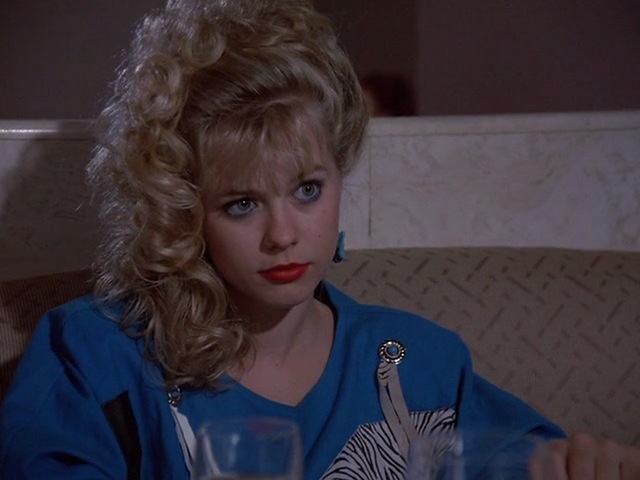 Watching it now, I am struck by two things that prove how much time can colour our perceptions. The first is how awful Ms. Lee’s performance is throughout much of the film and the second is how writer/director Sandor Stern made the strange decision to make her character the least sympathetic person in the film.
Watching it now, I am struck by two things that prove how much time can colour our perceptions. The first is how awful Ms. Lee’s performance is throughout much of the film and the second is how writer/director Sandor Stern made the strange decision to make her character the least sympathetic person in the film.
The copy line on the back of the DVD case reads “She was a decent girl in an indecent world,” which indicates that whoever wrote it never actually watched the film, but instead came up with this line on the basis of a quick plot summary. As written and performed, “Pauleen Anderson” (all of the names were changed despite the “This is a true story” announcement at the beginning of the film) is spoiled, bratty, foolishly ambitious and kinda dumb. She never strikes the viewer as ever having enough innocence to be shattered.
This is made even more apparent by the fact that characters who should come off at least a little scumbaggy are presented as thoughtful human beings with Pauleen’s best interests at heart. Even her coke dealer boyfriend is presented as a loving, caring guy who wishes she could see how the drugs he sells are ruining her life.
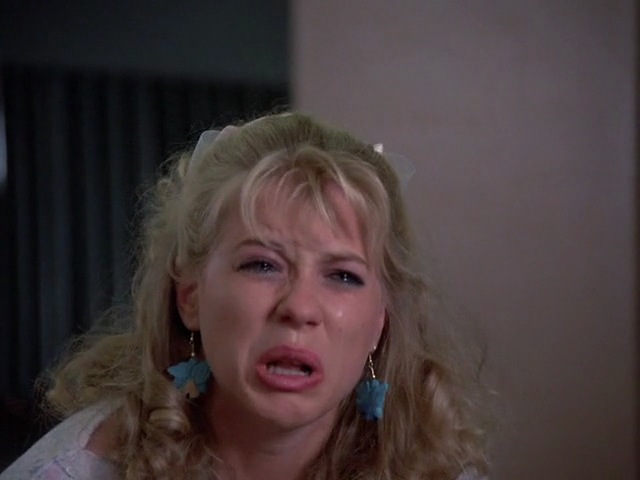 The problem is that the limits of the TV medium forces the film to imply Pauleen’s degradation—showing us only her tearfully crying in a shower after her first on camera sex scene. With a better actress it might have worked, but Lee is too inconsistent as a performer to sell the shame she feels.
The problem is that the limits of the TV medium forces the film to imply Pauleen’s degradation—showing us only her tearfully crying in a shower after her first on camera sex scene. With a better actress it might have worked, but Lee is too inconsistent as a performer to sell the shame she feels.
At the time Stern was best known as the screenwriter of the hit movie, The Amityville Horror, which was based on a fictional book that was sold as a true story, and he had been working in television for several years when he made Shattered Innocence. As a piece of filmmaking it is never less than professional, but suffers from budget issues that make it feel stage bound, like many other TV productions. His next film, Pin: A Plastic Nightmare, would end up being his first and last theatrical feature, which is a shame since it’s a genuinely great movie about mental illness that was unfortunately sold as a run of the mill horror outing.
Lee’s career, which had seen her playing the blond ingénue in the Judd Nelson vehicle Making the Grade, didn’t survive Shattered Innocence. I remember recognizing her a few years later when she appeared as a model in a then-ubiquitous exercise equipment commercial where the camera spent a lot of time focusing on her chest.
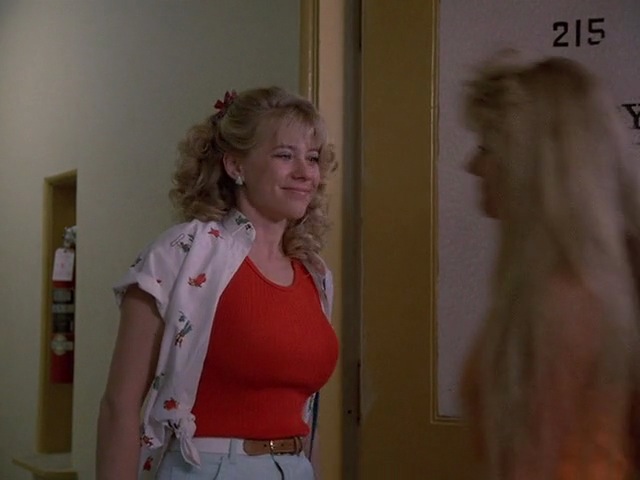
Ultimately the problem with Shattered Innocence is that it refuses to acknowledge its exploitative heart and insists on being far too tasteful for its own good. Stern was too talented to allow the production to descend into tasteless camp, but that’s precisely what it needed to overcome the budgetary and censorship limitations he was forced to deal with. Despite being based on a true story, the film feels bloodless and generic (had the producer’s waited seven years, they could have made pretty much the same movie about Shannon “Savannah” Wilsey, an adult actress whose tragic story didn’t differ that greatly from Applegate’s), making what could have been a potential B-TV classic into a tedious cliche.
Viewed in a post-Boogie Nights world, Shattered Innocence plays itself too straight and corny to work as either a piece of entertainment or compelling anti-porn propaganda. I suspect Stern made the choices he did precisely to avoid the latter, but his even-hand ends up hurting the film rather than saving it. If you're going to a take a plunge into these murkey waters, you gotta go deep to find the treasures that make the trip worthwhile.
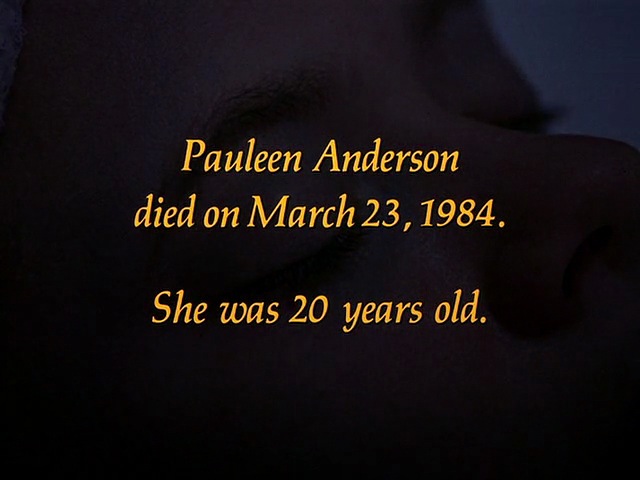
 Monday, February 20, 2012 at 2:37AM
Monday, February 20, 2012 at 2:37AM (By "I will probably repost soon" I actually meant "I'm going to repost immediately. I apologize for the uneven font, but I made the executive decision not to spend four hours correcting Blog-City's dubious code.)
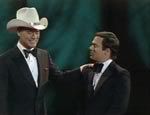
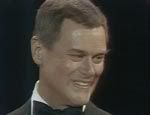
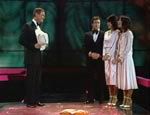
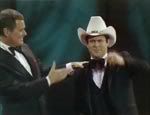

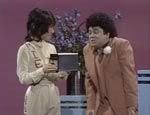

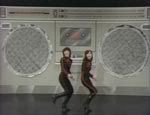
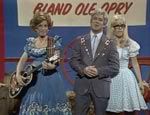
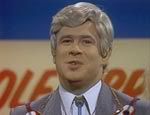
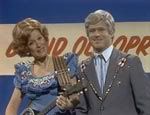
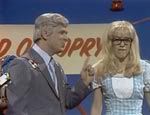
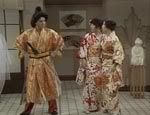
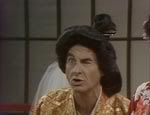
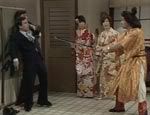
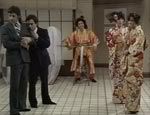


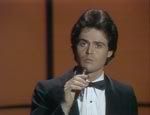





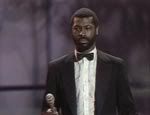
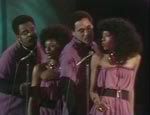

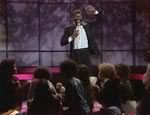

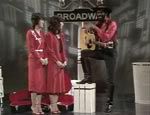

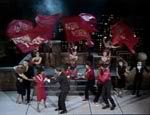
 B-TV,
B-TV,  Jeff Altman,
Jeff Altman,  Pink Lady,
Pink Lady,  Repost,
Repost,  Sid and Marty Krofft in
Sid and Marty Krofft in  B-TV,
B-TV,  Humour
Humour  Thursday, February 16, 2012 at 6:00AM
Thursday, February 16, 2012 at 6:00AM (This was one of my favourite pieces I ever wrote for the old House of Glib and I thought I'd repost it rather than write whatever lame bullshit I'd come up with in the 3 hours before I have to go to work. At the end there's the promise of future updates in the series. There's one more I did write that I probably will repost soon, but don't wait for anymore after that. Ain't gonna happen.)
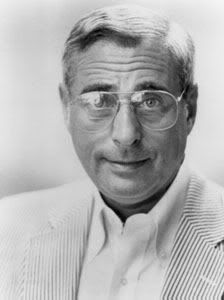 In 1980 Fred Silverman had been the president of the last place National Broadcasting Company (NBC) for two years--a position he had earned thanks to his reputation as a man who could work miracles for any network he worked for. During his tenure at the Columbia Broadcasting System (CBS), he had moved the network away from its core of rural comedies (Mayberry R.F.D, Green Acres, The Beverly Hillbillies and Hee-Haw) and transformed it into the home of much more sophisticated comedies such as All in the Family, The Mary Tyler Moore Show, The Bob Newhart Show and M*A*S*H. At the American Broadcasting Company (ABC) he inherited an ailing Happy Days and not only turned it into a top-rated hit, but built on its success with the popular spin-offs Laverne and Shirley and Mork and Mindy. He also gave the greenlight to such future hits as Barney Miller, Fantasy Island. Three's Company and Charlie's Angels, taking the network from last to first place.
In 1980 Fred Silverman had been the president of the last place National Broadcasting Company (NBC) for two years--a position he had earned thanks to his reputation as a man who could work miracles for any network he worked for. During his tenure at the Columbia Broadcasting System (CBS), he had moved the network away from its core of rural comedies (Mayberry R.F.D, Green Acres, The Beverly Hillbillies and Hee-Haw) and transformed it into the home of much more sophisticated comedies such as All in the Family, The Mary Tyler Moore Show, The Bob Newhart Show and M*A*S*H. At the American Broadcasting Company (ABC) he inherited an ailing Happy Days and not only turned it into a top-rated hit, but built on its success with the popular spin-offs Laverne and Shirley and Mork and Mindy. He also gave the greenlight to such future hits as Barney Miller, Fantasy Island. Three's Company and Charlie's Angels, taking the network from last to first place.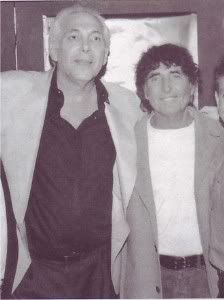
 Unfortunately for the behind the scenes talent, the extremely tight schedule of their foreign stars did not allow them to meet or rehearse with the duo until the day before the pilot episode was scheduled to be shot. It was only then that they learned the two details that ensured the entire project had been doomed from conception. Despite the constant assurances to the contrary, Mitsuyo Nemoto (aka Mie) and Keiko Masuda (aka Kei) were not fluent in English. Though they could engage in extremely limited conversation, they definitely did not speak the language well enough to host a North American TV show. To make matters worse, it was clear that neither one of them wanted to have anything to do with the show and were doing it out of contractual obligation rather than professional desire.
Unfortunately for the behind the scenes talent, the extremely tight schedule of their foreign stars did not allow them to meet or rehearse with the duo until the day before the pilot episode was scheduled to be shot. It was only then that they learned the two details that ensured the entire project had been doomed from conception. Despite the constant assurances to the contrary, Mitsuyo Nemoto (aka Mie) and Keiko Masuda (aka Kei) were not fluent in English. Though they could engage in extremely limited conversation, they definitely did not speak the language well enough to host a North American TV show. To make matters worse, it was clear that neither one of them wanted to have anything to do with the show and were doing it out of contractual obligation rather than professional desire.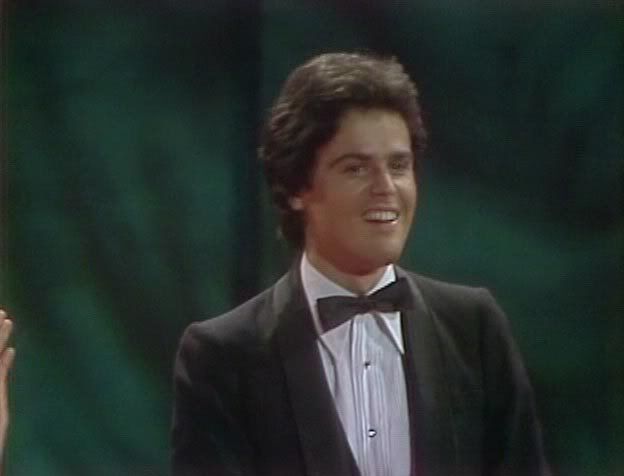
 B-TV,
B-TV,  Jeff Altman,
Jeff Altman,  Pink Lady,
Pink Lady,  Repost,
Repost,  Sid and Marty Krofft in
Sid and Marty Krofft in  B-TV,
B-TV,  Humour
Humour  Thursday, November 17, 2011 at 6:00AM
Thursday, November 17, 2011 at 6:00AM Even though I already posted this week’s edition of Rejected By Rod(?), I’m dipping back into my well of unposted Flick Attack reviews to start off this look at a B-TV classic. The FA part of this review was actually included in the first batch I ever sent to Rod, when I very briefly held myself to a very strict 250-word limit, which explains why it’s so much more pithy and succinct than my typical FA output.
Kiss Meets The Phantom of The Park
(1978)
The defining moment of the 1978 TV movie Kiss Meets the Phantom of the Park comes when drummer Peter Criss (aka Cat Man) first speaks aloud and the familiar Saturday morning cartoon voice of male Wonder Twin Zan (Michael Bell) comes out of his mouth. It’s then that you realize this film was: A) produced by Hanna-Barbara, B) stars a bunch of people who REALLY didn’t want to be involved in its production and C) is far more wonderful than mere mortals like us probably deserve.
Starring the world’s greatest all-time terrible rock band, the original members of Kiss play themselves—with the fictional license that along with being unapologetic cash whores, they also each possess super powers, which they’ll need in order to stop the titular villain (a slumming Anthony Zerbe) who is turning amusement park customers into robotic slaves. The band is alerted to his evil doings by a pretty young fan named Melissa, (Deborah Ryan) who—in the film’s most fantastic and unrealistic contrivance—Gene Simmons doesn’t try to fuck.
Normally talented genre director Gordon Hessler (The Golden Voyage of Sinbad), couldn’t overcome the film’s non-existent budget and as a result the film has an almost Ed Woodian level of unintentionally amusing shoddiness (ie. Ace Frehley’s stunt double is clearly an overweight black man). Definitely not for the serious minded, Kiss Meets the Phantom of the Park is one of those nostalgia pieces whose glaring imperfections actually makes it far more loveable than a well-made film.
I based the above review on multiple viewings of a really shitty bootleg copy I downloaded from Napster back when that was totally a thing you could do. As crappy as the quality was, the film itself was the same version I had seen several times play on weekday television when I was kid. So, you can imagine my surprise when I recently downloaded what I thought was merely a superior quality version of the exact same film, only to be stunned by the strange new movie that played before my eyes. Not only did it look 1000x better than my previous version, but right from the start I could tell that the editing was different, the soundtrack was better, and much of the overall suckiness had been removed.
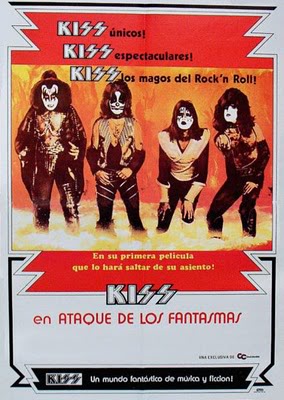 Being the asshole film geek that I am, I didn’t even have to turn to the Internet to figure out what was happening. All I had to do was look through my personal poster collection and find my copy of the one sheet for Kiss en ataque de los fantamas—the Spanish language version of the film, which had actually been released theatrically in Europe. I knew that when the original TV version aired, Kiss had refused to license their songs to play during non-concert/performance scenes in the films, but had changed their mind for the European release. This clued me into what I was watching. I had just been unprepared for how radically different the two films were.
Being the asshole film geek that I am, I didn’t even have to turn to the Internet to figure out what was happening. All I had to do was look through my personal poster collection and find my copy of the one sheet for Kiss en ataque de los fantamas—the Spanish language version of the film, which had actually been released theatrically in Europe. I knew that when the original TV version aired, Kiss had refused to license their songs to play during non-concert/performance scenes in the films, but had changed their mind for the European release. This clued me into what I was watching. I had just been unprepared for how radically different the two films were.
That’s not to say that this version (which is credited as Kiss in Attack of the Phantoms) isn’t as hilariously and rapturously cheesy as the version I had seen dozens of times before—it just manages to leave out all of the parts that made the original look like the Ed Wood spectacle I described in the (thus-far unpublished) FA review I originally wrote over a year ago.
I’ve always said that the best way to teach people how much impact editing can have on a project is to show them the studio and director cuts of Terry Gilliam’s Brazil, which are as radically different as two films based on the same raw material can be. The differences between Kiss Meets The Phantom of the Park and Kiss in Attack of the Phantoms aren’t that extreme, but they are significant enough to radically change the viewing experience.
The European theatrical version is close to 10 minutes shorter than the original, but by reordering and re-cutting important scenes, the plot actually feels much more organic and less haphazard—especially regarding Melissa’s search for her roboticized boyfriend. Gone are the shots featuring the overweight black stunt man dressed as Space Ace, and—most importantly—the Kiss tracks on the soundtrack bring a sense of fun and energy to the film that makes it many faults so much easier to digest. Just take a look at the difference between the classic scene where the evil robot version of Gene attacks a bunch of security guards. In the original the sequence is scored by what sounds like archival stock porn music:
While in the European theatrical cut, the same scene is scored to “Radioactive” from Simmons 1978 solo album:
In fact, the group’s (in)famous solo albums are the only sources the new soundtrack draws from—with Simmons getting the most attention. Beyond “Radioactive”, the film also uses his “Man of 1000 Faces” and “Mr. Make Believe”. Paul gets his “Love in Chains” in there, and Criss provides “Hooked on Rock ‘N’ Roll”. But the best moment belongs to Frehley, whose solo album produced the project's only lasting hit—the classic “New York Groove”, which turns the once-awful roller coaster fight sequence (see the clip embedded after the original FA review) into something pretty darn awesome:
Okay, maybe “awesome” is a bit much, but there’s no doubt that this alternative version completely changed my appreciation of this oft-mocked film. I already loved it when its imperfections couldn’t be ignored, but now that I’ve seen them successful hidden and disguised that love isn’t hipster-asshole-ironic, it’s hipster-asshole-genuine. And therein lies a whole heaping world of difference.
 Friday, October 28, 2011 at 6:31AM
Friday, October 28, 2011 at 6:31AM Made as a 90-minute pilot for a TV show that never happened, Bates Motel is an especially interesting example of the B-TV phenomenon. Essentially a TV sequel to Alfred Hitchcock’s Psycho, the movie ignores the two other film sequels that preceded it and imagines a new scenario in which Norman Bates died in the insane asylum he was sent to after his infamous murder spree.
 We only actually see Bates (played by a not entirely convincing Anthony Perkins lookalike) briefly in one flashback scene and some photographs. Our protagonist instead is Alex West (Harold & Maude’s Bud Cort), a fellow patient who befriended Norman as a boy, when he was sent to the asylum after fatally pushing his abusive stepfather into a dry-cleaning machine. Following Norman’s death, Alex discovers he has inherited the motel where Janet Leigh’s Marion Crane famously met her end in the shower. Judged cured by the same doctor who encouraged his friendship with Norman, Alex finds himself out in the real world for the first time in over 20 years, ready to become a hospitality entrepreneur.
We only actually see Bates (played by a not entirely convincing Anthony Perkins lookalike) briefly in one flashback scene and some photographs. Our protagonist instead is Alex West (Harold & Maude’s Bud Cort), a fellow patient who befriended Norman as a boy, when he was sent to the asylum after fatally pushing his abusive stepfather into a dry-cleaning machine. Following Norman’s death, Alex discovers he has inherited the motel where Janet Leigh’s Marion Crane famously met her end in the shower. Judged cured by the same doctor who encouraged his friendship with Norman, Alex finds himself out in the real world for the first time in over 20 years, ready to become a hospitality entrepreneur.
Once he arrives in Fairville (renamed from the original’s Fairvale), Alex is met with nothing but incredulity when he insists he's there to reopen the Bates place. Local handyman Henry Watson (Moses Gunn), who used to do small jobs for Norman and his mother back in the day, tells Alex all about what happened there and why folks might be reluctant to see the motel re-opened. The town’s bank manager, Tom Fuller (Gregg Henry), is at first excited by the news that Alex has gotten his hands on the property, but is stunned to learn he has no interest in tearing down the motel and putting a condo development in its place. Despite this, he agrees to give Alex a loan to rebuild the place anyway.
 Upon moving into the property’s famous house, Alex learns he’s not alone, as a local runaway named Willie (Lori Petty) has been squatting there for the past few months. She convinces him to let her stay and help out around the place, despite his strong conviction that this is something he has to do by himself.
Upon moving into the property’s famous house, Alex learns he’s not alone, as a local runaway named Willie (Lori Petty) has been squatting there for the past few months. She convinces him to let her stay and help out around the place, despite his strong conviction that this is something he has to do by himself.
Alex hires Henry to take on the reconstruction, during which the bodies of Mr. and Mrs. Bates both managed to be unearthed, seriously unnerving the crew. At night, Alex is tormented by visions of Norman’s mother around the property, forcing us to wonder if the place is haunted or if he has been released from the asylum too soon.
Eventually the motel is ready to open. Alex admits to Willie that a lot is on the line. His first payment to the bank is due the next day. She asks him how much he has to pay, and is shocked to find out that he owes $10,000. It seems impossible that the small motel can come up with that kind of money in just one night, but Alex—as nervous as he is—remains convinced that everything is going to turn out alright.
Before they know it, their first guest arrives. Barbara Peters (Kerrie Keane) is an aerobics instructor who tells Alex she’s there to work on a book she’s writing, but the truth is that she has come to the motel to commit suicide, spurred by her three failed marriages and uncertain future.
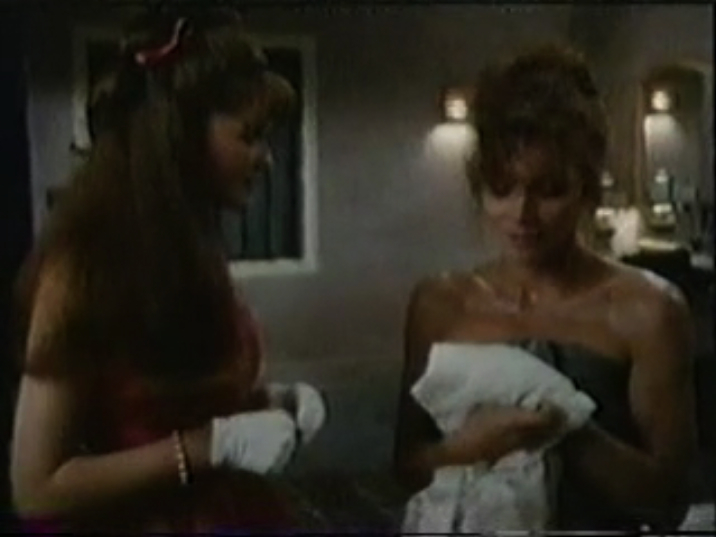 But before she can slit her wrists, the rest of the motel becomes fully booked when a group of teenagers in strangely old-fashioned clothes arrive to have a party. One of the teens, Sally (Khrystyne Haje), walks into Barbara’s room by mistake and somehow convinces the older woman to join them. There at the party, she is introduced to the shy, quiet, Tony (Jason Bateman), who she is strongly attracted to, despite their age difference.
But before she can slit her wrists, the rest of the motel becomes fully booked when a group of teenagers in strangely old-fashioned clothes arrive to have a party. One of the teens, Sally (Khrystyne Haje), walks into Barbara’s room by mistake and somehow convinces the older woman to join them. There at the party, she is introduced to the shy, quiet, Tony (Jason Bateman), who she is strongly attracted to, despite their age difference.
While this goes on, Willie has taken it upon herself to look into the suspicious connection between one of the members of the construction crew and Tom Fuller. Could it be more than a coincidence?
Barbara and Tony almost kiss, but she stops before it happens, insisting that she’s far too old to share such a moment with someone his age. He runs off, and she follows him. Outside the motel, he tells her how cold and lonely he feels, and she comforts him as best she can. When she leaves him to return to her hotel room, she picks up the razor she had brought to end her life and is shocked when Sally appears in the room, despite the locked door. Sally explains that she knows why Barbara is there and how she feels. She insists that after a person commits suicide their misery doesn’t end, but continues in a place that is cold and lonely.
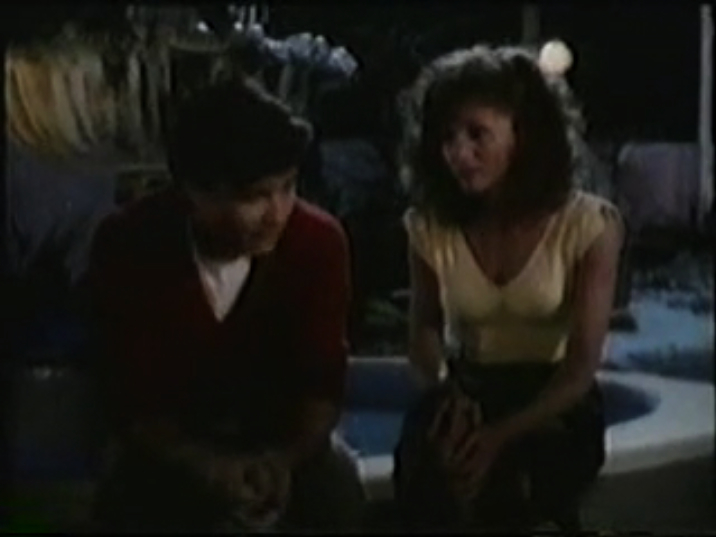
Barbara remembers Tony using those exact same words and accuses Sally of spying on them. Sally tells her that she did no such thing and that she knows what she’s talking about because she committed suicide nearly 30 years earlier. She opens the window to Barbara’s room and outside sit all of the kids in outdated clothes, including Tony. They all tell Barbara their names, date of births and the day they committed suicide. After they have all spoken, they leave her alone to decide what she should do that night.
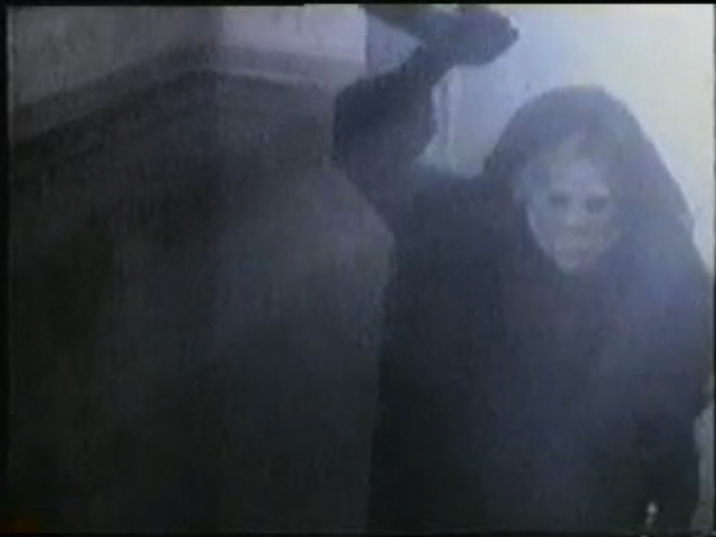 As they leave, Alex returns to the house and is horrified by the sight of Mrs. Bates at the top of the stairs. She comes running at him with a knife, but is tackled by Henry before she can hurt him. Henry rips off her mask and reveals Tom Fuller, who’s been trying to drive Alex crazy to get his hands on the valuable property. He insists the cops would never believe Alex’s story, but shouts out a panicked confession when “the real” Mrs. Bates appears from another room to attack him. In this case, it’s Willie, armed with a tape recorder, which she threatens to take to the police unless Fuller agrees to renegotiate Alex’s loan payments. Turns out Alex was right and everything did work out in the end.
As they leave, Alex returns to the house and is horrified by the sight of Mrs. Bates at the top of the stairs. She comes running at him with a knife, but is tackled by Henry before she can hurt him. Henry rips off her mask and reveals Tom Fuller, who’s been trying to drive Alex crazy to get his hands on the valuable property. He insists the cops would never believe Alex’s story, but shouts out a panicked confession when “the real” Mrs. Bates appears from another room to attack him. In this case, it’s Willie, armed with a tape recorder, which she threatens to take to the police unless Fuller agrees to renegotiate Alex’s loan payments. Turns out Alex was right and everything did work out in the end.
The next morning, Barbara walks out of her motel room very much alive. Alex tells her to come back soon, which causes her to adopt a nervous smile. As she drives off, Alex looks directly into the camera and speaks right to us for the first time, saying:
Written and directed by Richard Rothstein, who also wrote the 1984 Wes Craven B-TV classic Invitation to Hell, Bates Motel is an interesting effort whose flaws work hard to disguise a truly interesting concept. Had the pilot been successful and actually gone to series, I suspect the result would have been the kind of short-lived cult show that fans discuss ad naseum today (think Max Headroom).
For me the most fascinated aspect of the potential series is its protagonist. As portrayed by Cort, Alex is a naïve innocent barely ready for the realities of the modern world, yet his history proves that he is capable of protecting himself when forced. He’s not a traditional hero, but he’s genuinely likable, which makes the fact that the movie’s ending suggests the series would have him take on the role of Rod Serling-esque anthology host very intriguing. Neither mysterious or dangerous, he would have been the first character of his kind to project an air of vulnerability rather than Uatu-like ambivalence.
It’s hard to say what the tone of the series might have been. Barbara’s story is more preachy than scary, but is thankfully saved from being unbearable by the excellent performances of all involved. I suspect, like The Twilight Zone, a Bates Motel series would have attempted to touch upon all kinds of storytelling, but that’s just pure conjecture.
That said, there are several things that work against the film. The soundtrack is truly horrible, filled with a cheap canned score that ruins several important moments. I’ve always been in the minority who’s found Lori Petty to be a charming performer, but the character of Willie is just too irrational and emotional to sympathize with (she literally leaves and comes back three times in the course of the movie). But the worst aspect is the cheesy Scooby-Doo mystery involving the banker’s attempt to steal the land. It’s trite and obvious to begin with, and only made more with an actor as obviously oily as Gregg Henry cast in the villain’s role.
Still, Bates Motel (which has never officially been released on video in North America) is still worth seeking out, if only to appreciate what happens when an imaginative concept is undone by imperfect execution.
 Wednesday, October 19, 2011 at 6:01AM
Wednesday, October 19, 2011 at 6:01AM (Note: It's late and I'm tired, so I've chosen not to proofread the following post. Please consider any mistakes you might find to be deliberate "Easter Eggs" I left specifically for your amusement)
They don't make TV movies like they used to. Now, that's not me speaking out of any sense of misplaced nostalgia, it's literally true--they DO NOT make TV movies like they did when I was young. That is to say they pretty much don't make them much at all. Beyond the occasional Hallmark Hall of Fame presentation, the Big 3 networks have all but abandoned the format in favour of much cheaper reality show programming. This marks a huge change from back when you could count on one or two debuting each week. And, no cable doesn't count. If you can include all of the same shit that you can see in a theater, it isn't a TV movie, it's a movie that premiered on TV. Huge difference. Don't be stupid and make me explain it to you.
When people think about the TV movies of old, they usually remember the soapy, message pictures that seemed to dominate the format. But any B-Movie fan can tell you that many great genre films debuted on the small screen. This continuing feature is dedicated to briefly looking at some classic examples of films that were too big for TV, but way too small for anywhere else.
We begin our examination with a cheesy classic that plays like the redheaded bastard stepchild of the already somewhat disreputable Airport series. I wouldn't be at all surprised if it had originally been written to serve as the fifth film in the series, following The Concorde... Airport '79 (in fact, it was actually released in the Philippines as Airport '85). All of the elements are there--a collection of c-list performers, gratuitous melodrama, and the kind of potential disaster only a ton of drugs could help conceive. It's the kind of film whose utter disregard for anything approaching verisimilitude is so vehement you get the sense that the filmmakers would happily kick you in the nuts if they could, because by that point there's clearly nothing holding them back. Yet, I found this more charming than frustrating--a classic example of imagination refusing to bow down to the petty bullshit of reality. And, believe me, this film bows down to no reality you know.
I am, of course, talking about:
Despite the claims of the above poster, the film originally aired on television in 1983 with the title Starflight: The Plane That Couldn't Land and it was directed by TV movie vet Jerry Jameson, who--wouldn't you know it--just happened to also make a little film called Airport '77.
Coincidence?
Jameson was also responsible for the mega-bomb Raise the Titanic, so it's amazing he managed to find any work at all, much less directing TV movies like Starflight. Suffice it to say, the budget of the two films bear absolutely no relation to the other.
 Like a lot of Jameson's 80s TV work, Starflight stars Lee Majors, which is awesome. He plays a pilot, which is also awesome. He's also banging single mom publicist Lauren Hutten, which would be gap-toothed awesome, were it not for the fact that he's married to someone else, which makes it adulterously awesome.
Like a lot of Jameson's 80s TV work, Starflight stars Lee Majors, which is awesome. He plays a pilot, which is also awesome. He's also banging single mom publicist Lauren Hutten, which would be gap-toothed awesome, were it not for the fact that he's married to someone else, which makes it adulterously awesome.
The reason Majors and Hutton know each other is because he's the pilot of the groundbreaking flight she's publicizing. The Starflight is a revolutionary hypersonic passenger plane that goes up so far into the atmosphere it can travel to Australia in just over one hour. It's so revolutionary that its creator, Hal Linden, is pretty sure the flight is going to end in disaster. Turns out, he's right!
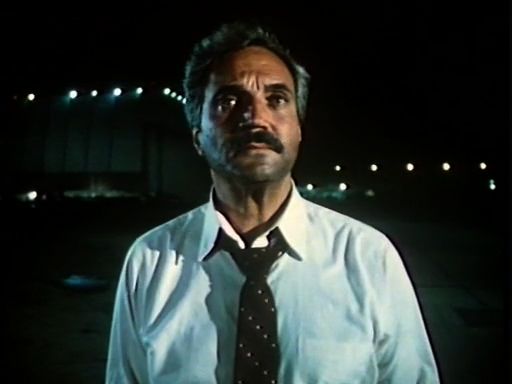 Actually, the flight would've gone fine, were it not for the desperate actions of sleazy businessman Terry Kiser. Flying to Australia for the launch of the satellite he funded, he's devastated by the news that the launch is going to be postponed, as it will ruin him financially. Consequences be damned, he orders that the rocket be launched anyway. His Australian crony reluctantly agrees, but then blows up the rocket midway through its flight. The resulting debris damages Starflight and forces it to gain even more altititude than it already had. The shocking result is that the plane completely leaves Earth's atmosphere and enters the cold, black darkness of space!
Actually, the flight would've gone fine, were it not for the desperate actions of sleazy businessman Terry Kiser. Flying to Australia for the launch of the satellite he funded, he's devastated by the news that the launch is going to be postponed, as it will ruin him financially. Consequences be damned, he orders that the rocket be launched anyway. His Australian crony reluctantly agrees, but then blows up the rocket midway through its flight. The resulting debris damages Starflight and forces it to gain even more altititude than it already had. The shocking result is that the plane completely leaves Earth's atmosphere and enters the cold, black darkness of space!
The rest of the film is then naturally devoted to the safe return of most of the passengers (you'll be shocked to learn that Kiser doesn't survive the trip), which is mostly accommodated by a space shuttle that travels to and from Earth with the 15-minute frequency of a public bus.
During this long stretch of film there are moments of genuine tension and excitement (Linden is transported from Starflight to the shuttle via a casket), pure unintended hilarity (the expense of constantly shooting everyone as being weightless is taken care of by the stewardesses rolling out a length of rope for the passengers and crew to hold on as they walk across the plane), and classic disaster movie irony (the airplane mechanic who has to go out into space to repair the plane is afraid of flying!).
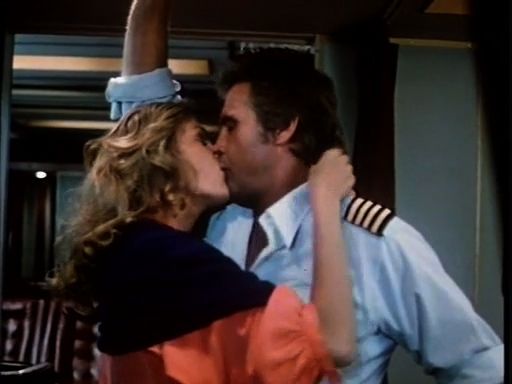 Even someone as incapable of giving a flying fuck about science as myself will not be able to ignore the constant barrage of implausibilities. If Starflight can't get back to Earth without blowing up in the blazing furnace of the planet's atmosphere, how the hell did it make it past that same atmosphere to get into space in the first place? How is it that the space shuttle is able to touch down right where it needs to be, every single time, at least half a dozen times in one day? Doesn't Earth's orbit make that impossible? Who's paying for all the fuel required for all these fucking launches? Are these 50+ passengers really worthy an investment that even in 1982 had to be in the high millions, if not billions? Why would Lauren Hutton take her 12 year-old daughter on the maiden flight of an unproven aeronautical innovation that was obviously doomed to failure? Okay, so except for that one expensive scene, we don't see anyone weighless because they're wearing their seatbelts and holding the aisle rope--how come their hats and ties aren't floating around?
Even someone as incapable of giving a flying fuck about science as myself will not be able to ignore the constant barrage of implausibilities. If Starflight can't get back to Earth without blowing up in the blazing furnace of the planet's atmosphere, how the hell did it make it past that same atmosphere to get into space in the first place? How is it that the space shuttle is able to touch down right where it needs to be, every single time, at least half a dozen times in one day? Doesn't Earth's orbit make that impossible? Who's paying for all the fuel required for all these fucking launches? Are these 50+ passengers really worthy an investment that even in 1982 had to be in the high millions, if not billions? Why would Lauren Hutton take her 12 year-old daughter on the maiden flight of an unproven aeronautical innovation that was obviously doomed to failure? Okay, so except for that one expensive scene, we don't see anyone weighless because they're wearing their seatbelts and holding the aisle rope--how come their hats and ties aren't floating around?
I could go on, but won't. Starflight doesn't need to justify its vast array of bullshit. It's a silly TV movie! And that's why we love them. Let the "real" movies worry about such undramatic, story-stopping foolishness like science. Starflight is grounded in its own reality--the B-TV Bullsh*t Zone.
And you wouldn't want it to be anywhere else!
 Airport,
Airport,  B-TV,
B-TV,  Disaster Movies,
Disaster Movies,  Lauren Hutton,
Lauren Hutton,  Lee Majors,
Lee Majors,  Starflight in
Starflight in  80s Action,
80s Action,  B-Movies,
B-Movies,  B-TV
B-TV Vanity Fear banner created and designed by France's own Nicolas Lambert.